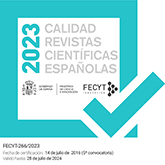Ecological and biogeographical basis of avian rarity in Madrid (Central Spain)
DOI:
https://doi.org/10.3989/graellsia.2006.v62.iExtra.129Keywords:
Birds, ecological rarity, categories of regional conservation status, MadridAbstract
The conservation status of bird species of Comunidad de Madrid is analysed using the ecological breadth of the species, the distribution area, their habitat preferences, and maximum ecological densities in the region. The species which are less widely distributed in Madrid are characterized by their low maximum ecological densities, narrow habitat breadths, and limited distribution in the Iberian peninsular. Another component defining regional rarity shows that large-sized species tend to reach lower densities than small-sized birds. These two gradients of ecological rarity are closely associated with the current categories of threat status in Madrid, and allow the proposal and justification of possible modifications of the regional catalogue for 11 species.
Downloads
Download data is not yet available.
Downloads
Published
2006-05-08
How to Cite
1.
Carrascal LM, Palomino D, Seoane J. Ecological and biogeographical basis of avian rarity in Madrid (Central Spain). Graellsia [Internet]. 2006May8 [cited 2024Jul.22];62(Extra):483-507. Available from: https://graellsia.revistas.csic.es/index.php/graellsia/article/view/129
Issue
Section
Research Articles
License
Copyright (c) 2006 Consejo Superior de Investigaciones Científicas (CSIC)

This work is licensed under a Creative Commons Attribution 4.0 International License.
© CSIC. Manuscripts published in both the printed and online versions of this Journal are the property of Consejo Superior de Investigaciones Científicas, and quoting this source is a requirement for any partial or full reproduction.All contents of this electronic edition, except where otherwise noted, are distributed under a “Creative Commons Attribution 4.0 International” (CC BY 4.0) License. You may read here the basic information and the legal text of the license. The indication of the CC BY 4.0 License must be expressly stated in this way when necessary.
Self-archiving in repositories, personal webpages or similar, of any version other than the published by the Editor, is not allowed.













